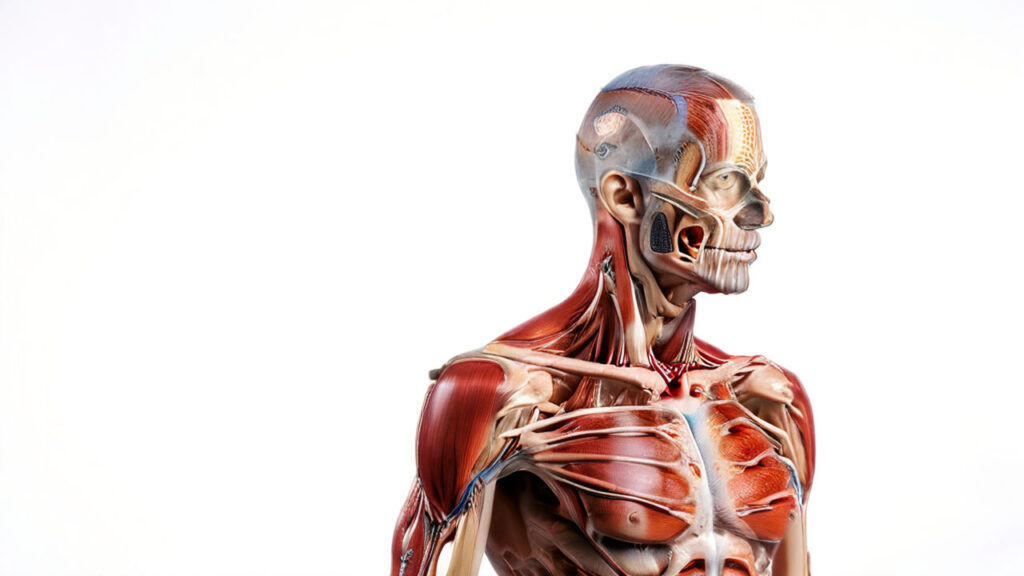Introduction
Welcome to a fascinating journey through the marvels of the human body! In this article, we will delve into the wondrous complexities that make up our being. From the intricate workings of the brain to the rhythmic beats of the heart, the human body is a masterpiece of nature. Join us as we uncover interesting facts and discoveries about the incredible vessel that houses our existence.
Unveiling the Marvels Within Us
Embark on a journey to explore the wonders concealed within the human body. From the microscopic intricacies to the grandeur of its systems, we’ll unravel the mysteries that define our existence.
Understanding the Intricacies of the Human Body
Dive deep into the complexities of our physiology, from the cellular level to the orchestration of organs and systems. Every component plays a vital role in sustaining life, offering a glimpse into the remarkable design of nature.
A Journey Through Fascinating Discoveries
Join us as we traverse through the annals of scientific exploration, uncovering surprising facts and revelations about the human body. From ancient observations to modern breakthroughs, each discovery adds to the tapestry of our understanding.
The Incredible Brain
The Control Center of Our Being
The brain stands as the central command center of the human body, orchestrating every thought, sensation, and action with unparalleled precision.
Mind-Boggling Neuron Network
At the heart of its operations lies a vast network of neurons, intricately connected to form the foundation of our cognitive abilities. The sheer complexity and interconnectivity of these neurons defy comprehension, forming the basis of our consciousness and intellect.
Brain’s Astonishing Memory Capacity
One of the most remarkable aspects of the brain is its astonishing memory capacity. From the mundane details of daily life to profound experiences etched into our consciousness, the brain stores an incomprehensible amount of information, shaping our identities and influencing our decisions.
The Miraculous Heart
The Rhythmic Engine of Life
The heart, often referred to as the “rhythmic engine of life,” serves as the driving force behind our existence. With each beat, it pumps oxygen-rich blood throughout the body, sustaining the functions of every organ and tissue.
Pumping Marvel: Heart’s Lifetime Output
In a lifetime, the heart performs an extraordinary feat, pumping millions of gallons of blood without falter. Its relentless rhythm sustains life from the moment of conception until the final beat, embodying resilience and vitality.
The Mysteries of Heartbeats Unveiled
Despite its essential role, the mechanism behind the heart’s rhythmic beats remains shrouded in mystery. Through scientific inquiry and technological advancements, researchers continue to unravel the intricacies of cardiac physiology, shedding light on the mechanisms that govern our most vital organ.
The Versatile Muscles
The Powerhouses of Movement
Muscles, the powerhouses of movement, enable us to perform a myriad of actions, from the simplest gesture to the most complex physical feats. Their flexibility and strength underpin our ability to navigate the world around us.
Super Strength: The Muscle Memory Phenomenon
One of the most intriguing aspects of muscles is their capacity for memory. Through repetitive motion and training, muscles develop a memory of their own, allowing for increased strength, speed, and coordination over time. This phenomenon, known as muscle memory, underscores the remarkable adaptability of our muscular system.
Fun Facts About Muscle Endurance
Muscle endurance, the ability of muscles to sustain repeated contractions over an extended period, is a fascinating aspect of human physiology. From the endurance of marathon runners to the strength of weightlifters, our muscles exhibit a remarkable range of capabilities that defy conventional limitations. Exploring these fun facts sheds light on the incredible potential of the human body to adapt and excel in various physical endeavors.
The Mighty Bones
The Silent Supporters of Our Frame
Bones, often referred to as the silent supporters of our frame, provide the structural framework that enables movement, protects vital organs, and supports the body’s weight. Despite their understated presence, bones play a crucial role in maintaining our overall health and well-being.
Bone Density: A Testament to Strength
Bone density serves as a testament to the strength and resilience of our skeletal system. It reflects the concentration of minerals, primarily calcium and phosphorus, within our bones, which contribute to their hardness and durability. Understanding bone density is essential for assessing bone health and preventing conditions such as osteoporosis.
Astonishing Bone Facts You Didn’t Know
Delve into the fascinating world of bones and uncover surprising facts that defy conventional wisdom. From the intricacies of bone formation to the remarkable regenerative abilities of our skeletal system, exploring these lesser-known facts offers a newfound appreciation for the resilience and complexity of our bones.
The Mystical Eyes
The Windows to the Soul
Eyes, often referred to as the windows to the soul, hold a mystical allure that transcends their physical form. They serve as portals through which we perceive the world, convey emotions, and establish connections with others.
The Color Spectrum of Human Eyes
Human eyes exhibit a mesmerizing array of colors, ranging from deep browns to vibrant blues and greens. This diverse spectrum of eye colors arises from variations in the concentration of melanin and other pigments within the iris, reflecting the unique genetic makeup of each individual.
Visionary Insights: The Science Behind Eye Colors
Unravel the science behind eye colors and gain a deeper understanding of the factors that influence their hues. From genetic inheritance to environmental influences, various factors contribute to the captivating diversity of eye colors observed in human populations. Exploring these visionary insights sheds light on the intricate interplay between genetics, biology, and aesthetics in shaping our ocular identity.
The Sensational Skin
Our Protective Shield Against the World
Skin, our body’s largest organ, serves as a protective shield against the myriad of environmental threats we encounter daily. From harmful UV rays to pathogens and pollutants, our skin acts as a formidable barrier, safeguarding our internal organs and maintaining homeostasis.
Skin’s Incredible Regenerative Abilities
One of the most remarkable qualities of the skin is its incredible regenerative abilities. Through a complex process of cell turnover and repair, damaged skin can often heal itself, regenerating new tissue to replace injured or compromised areas. This innate ability underscores the resilience and adaptive nature of our skin.
Skin’s Role in Thermoregulation
Beyond its protective function, the skin plays a vital role in thermoregulation, helping to maintain stable body temperature in varying environmental conditions. Through processes such as sweating and vasodilation, the skin regulates heat exchange with the surrounding environment, ensuring optimal physiological function.
The Marvelous Digestive System
From Intake to Energy
The digestive system is a marvel of biological engineering, orchestrating the complex process of breaking down food into nutrients that fuel our bodies. From the moment food enters our mouths to its journey through various digestive organs, each step is crucial in extracting essential nutrients and energy.
The Length of the Digestive Tract
Spanning from the mouth to the anus, the digestive tract is a labyrinthine pathway that measures an astonishing length. While exact measurements vary among individuals, the average adult digestive tract can stretch up to 30 feet, showcasing the intricacies of its design.
Surprising Facts About the Digestive Process
Delve into the fascinating realm of digestion and uncover surprising facts that highlight the efficiency and adaptability of our digestive system. From the role of enzymes in breaking down food to the symbiotic relationship between gut bacteria and our overall health, exploring these lesser-known facts offers new insights into the remarkable capabilities of our digestive system.
The Astounding Immune System
Our Internal Defense Mechanism
The immune system stands as our body’s internal defense mechanism, tirelessly safeguarding us against pathogens, toxins, and foreign invaders. Through a sophisticated network of cells, tissues, and organs, it acts as a vigilant guardian, detecting and neutralizing threats to our health.
Immune Cells: The Warriors Within
At the heart of the immune system lies a diverse array of specialized cells, each with unique functions and capabilities. From macrophages and neutrophils to T cells and B cells, these cellular warriors form the frontline defense against infections and diseases, orchestrating a coordinated response to eliminate threats and maintain homeostasis.
Immune System’s Marvelous Memory
One of the most remarkable attributes of the immune system is its ability to remember past encounters with pathogens and mount a rapid and targeted response upon re-exposure. Through the process of immunological memory, the immune system retains information about previous infections, allowing for quicker and more effective responses to future threats. This remarkable capacity for memory enhances our body’s ability to fend off pathogens and adapt to changing environments, highlighting the dynamic and adaptive nature of our immune system.
The Remarkable Respiratory System
Breathing Life Into Us
The respiratory system serves as the essential mechanism for supplying our bodies with oxygen and removing carbon dioxide, thereby sustaining life itself. Through the process of respiration, the respiratory system facilitates the exchange of gases between the body and the environment, ensuring the continuous flow of oxygen to vital organs and tissues.
The Lung’s Surface Area
Central to the respiratory system are the lungs, whose intricate structure provides an extensive surface area for gas exchange. Remarkably, the total surface area of the lungs, when stretched out, is equivalent to the size of a tennis court, maximizing the efficiency of oxygen uptake and carbon dioxide release.
Surprising Facts About Our Breathing Patterns
Explore the fascinating realm of breathing patterns and uncover surprising facts that shed light on the complexities of respiratory physiology. From the rhythmic dance of the diaphragm to the influence of emotions and stress on breathing, these lesser-known facts offer new perspectives on the integral role of respiration in maintaining health and well-being.
The Intriguing Endocrine System
Regulating Our Body’s Functions
The endocrine system serves as a sophisticated regulatory network, coordinating and controlling various physiological processes essential for maintaining homeostasis and overall well-being. Through the secretion of hormones, it orchestrates communication between different organs and tissues, ensuring harmonious function throughout the body.
Hormones: The Chemical Messengers
At the heart of the endocrine system are hormones, powerful chemical messengers that travel through the bloodstream to target cells and tissues, eliciting specific responses. From regulating metabolism and growth to influencing mood and reproduction, hormones play a pivotal role in virtually every aspect of human physiology and behavior.

The Endocrine Glands and Their Functions
The endocrine system comprises several glands, each with distinct functions and roles in hormone production and secretion. From the pituitary gland, often referred to as the “master gland,” to the thyroid, adrenal glands, and beyond, these glands work in concert to maintain hormonal balance and regulate various bodily functions. Delving into the functions of each gland offers insights into the intricate interplay of hormones and their profound impact on our health and vitality.
The Fascinating Reproductive System
The Cycle of Life Continues
The reproductive system perpetuates the cycle of life, ensuring the continuation of our species through the miraculous process of reproduction. From conception to birth, it embodies the awe-inspiring journey of creating new life and nurturing its development.
The Complexity of Human Reproduction
Human reproduction is a marvel of biological complexity, involving intricate interactions between male and female reproductive structures and processes. From the production of gametes to fertilization and embryonic development, each step is carefully orchestrated to facilitate the creation of new offspring.
The Marvels of Fetal Development
Fetal development unfolds with remarkable precision, guided by a series of intricate cellular processes and genetic instructions. From the formation of basic anatomical structures to the development of organs and systems, the journey from embryo to fetus is a testament to the wonders of life’s unfolding mysteries. Exploring the marvels of fetal development offers profound insights into the delicate balance of nature and the incredible potential inherent in every new life.
The Surprising Sense of Taste
Exploring Flavors and Beyond
The sense of taste, often taken for granted, is a sensory marvel that adds richness and depth to our culinary experiences. Beyond merely detecting flavors, it serves as a gateway to exploring cultural traditions, culinary innovations, and the intricacies of gastronomy.
The Science Behind Taste Buds
Taste buds, nestled within the papillae of the tongue, are the microscopic receptors responsible for detecting the five primary tastes: sweet, sour, salty, bitter, and umami. Through a complex interplay of chemical signals and neural pathways, taste buds transmit sensory information to the brain, shaping our perception of flavor and influencing our dietary preferences.
Taste Perception and Its Quirks
Taste perception is a multifaceted phenomenon influenced by a myriad of factors, including genetics, upbringing, and cultural background. From individual differences in taste sensitivity to the intriguing concept of acquired tastes, our perception of flavor can vary widely from person to person. Exploring these quirks offers insights into the fascinating interplay between biology, psychology, and culture in shaping our culinary experiences.
The Mysterious Sense of Smell
Unraveling the Aromas Around Us
The sense of smell, often overlooked yet profoundly influential, plays a pivotal role in our perception of the world. Through the detection of airborne molecules, it allows us to experience a rich tapestry of aromas that evoke memories, evoke emotions, and enhance our sensory experiences.
The Olfactory Bulb: Gateway to Smell
At the core of our sense of smell lies the olfactory bulb, a specialized structure in the brain responsible for processing olfactory information. Through a complex network of neural connections, the olfactory bulb deciphers the chemical signatures of various odors, allowing us to discern and interpret the scents that surround us.
How Smell Influences Memory
One of the most intriguing aspects of smell is its profound influence on memory and emotion. Unlike other sensory modalities, smells have a unique ability to evoke vivid memories and trigger powerful emotional responses. This phenomenon, known as the Proustian memory effect, highlights the close relationship between smell, memory, and emotional processing. Exploring how smell influences memory offers insights into the intricate workings of the human brain and the profound impact of sensory experiences on our lives.
The Complex Sense of Hearing
Listening to the Symphony of Life
The sense of hearing enriches our lives, allowing us to perceive the rich tapestry of sounds that surround us. From the melodious chirping of birds to the rhythmic hum of city life, our ears serve as portals to the symphony of the world, connecting us to our environment and each other.
The Ear’s Remarkable Sound Detection
At the heart of our sense of hearing lies the ear, a marvel of biological engineering designed for remarkable sound detection. From the outer ear’s intricate anatomy for capturing sound waves to the inner ear’s delicate structures for converting vibrations into neural signals, each component plays a crucial role in our auditory perception.
How Our Ears Protect Themselves
In addition to detecting sound, our ears possess ingenious mechanisms for self-protection against excessive noise and potential damage. From the reflexive contraction of muscles to dampen loud sounds to the remarkable ability of the cochlea to adapt to varying noise levels, our ears employ a range of strategies to safeguard their delicate structures and preserve our hearing health. Exploring these protective mechanisms offers insights into the intricate balance between sensory perception and self-preservation in the complex sense of hearing.
Conclusion
Our journey through the intricate wonders of the human body leaves us in awe of its complexity and beauty. From the astounding brain to the delicate senses, each part plays a vital role in our existence, reminding us of the marvels within us. As we delve deeper into the mysteries of our physiology, we gain a newfound appreciation for the intricate design and remarkable capabilities of the human body. Whether exploring the astonishing regenerative abilities of our skin or marveling at the intricate mechanisms of our immune system, each discovery underscores the resilience and adaptability inherent in our biological makeup. Indeed, our journey through the marvels of the human body serves as a testament to the ingenuity of nature and the profound interconnectedness of all living things.
FAQs
- How many bones are there in the human body?
- The adult human body typically has 206 bones.
- What’s the strongest muscle in the human body?
- The masseter muscle, responsible for chewing, is often considered the strongest.
- Can the human stomach digest metal?
- No, the stomach’s acidic environment can’t digest metal, but it can break down some softer metals over time.
- How many neurons are there in the human brain?
- The human brain contains an estimated 86 billion neurons.
- Can humans live without a sense of smell?
- While it’s possible to live without a sense of smell, it can impact one’s quality of life and safety.

















No Comments
Leave a comment Cancel